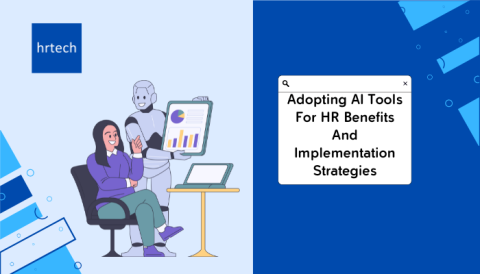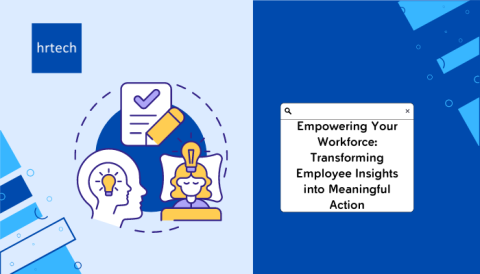HR leaders have the responsibility to increase employee engagement, retention, and performance to positively impact business outcomes.
by Sriram Iyer, Founder & CEO, hrtech
With the constantly evolving business environment, the role of HR has become increasingly complex, requiring a range of skills and knowledge to manage people effectively. Once organisations get the basics of HR right, managing and optimising their internal resources becomes easier. Human resource management is so much more than just collating employee data. HR leaders have the responsibility to increase employee engagement, retention, and performance to positively impact business outcomes. Here, human resource management plays a crucial role.
What is Human Resource Management (HRM)?
HRM is the practice of managing an organisation’s workforce to achieve better results. The primary objective of HRM is to ensure that employee skills are effectively utilised to achieve business goals. HRM also involves ensuring that employees are happy and engaged with their work.
Basics of Human Resource Management
1. Recruitment & Selection
The recruitment and selection process involves identifying and hiring the most suitable candidate. The recruitment process focuses on attracting potential candidates to apply for a job, while the selection process focuses on evaluating and choosing the best candidate among the applicants. The recruitment and selection process forms the first of the 7 basics of human resource management and covers the following steps
- Job Analysis: The HR department identifies the job description, responsibilities, qualifications, and skills required for the position.
- Sourcing Candidates: HR advertises job openings in various sources such as job portals, social media, newspapers, and referrals to attract potential candidates.
- Screening Candidates: HR screens the applications and resumes to shortlist the most suitable candidates based on their qualifications and experience.
- Selection: The HR department conducts interviews, tests, and assessments to evaluate the shortlisted candidates and select the best fit for the job.
- Background Verification: Once a candidate is selected, there will be a thorough background check to verify the candidate’s credentials, references, and past work experience.
- Job Offer:The job offer is made to the selected candidate, which includes salary, benefits, and other terms and conditions of employment.
- Onboarding: The onboarding process includes introducing the new employee to the company culture, policies, and procedures.
2. Performance Management
One of the most important HR basics is Performance Management. It is the process of setting goals, assessing employee performance, providing feedback, and implementing strategies to improve performance. It is an ongoing process that enables employees to understand their roles and responsibilities and to align their performance with organisational objectives.
Since performance management is directly linked with the business outcome, this is a crucial element of human resource management. It includes the following key steps:
- Setting Expectations: This involves defining job roles and responsibilities, establishing performance standards, and setting goals and objectives.
- Monitoring Performance: This is done through regular check-ins, performance reviews, and tracking progress towards goals.
- Providing Feedback: Regular feedback helps employees understand their ongoing performance and areas of improvement.
- Upskilling Employees: Training and coaching can be provided to employees to close the skill gaps and improve their performance.
- Rewarding Performance: Recognising and rewarding employees who perform well can be done through promotions, bonuses, or other incentives.
3. Learning & Development
Next on the list of basics of HR is employee learning and development. This refers to the process of providing employees with opportunities to learn new and relevant skills. This can be achieved through various methods, such as training programs, workshops, on-the-job learning, coaching, and mentoring. Employee L&D includes:
- Training Needs Assessment: Needs assessment helps in identifying the skill gaps and areas where employees need to acquire information and knowledge to improve their abilities.
- Training Design: Organisations can design training programs for specific learning needs including classroom training, online courses, job shadowing, and coaching sessions.
- Training Implementation: This involves communicating the program details to employees, scheduling training sessions, and tracking attendance.
- Training Evaluation: The effectiveness of the training programs can be evaluated through feedback surveys, assessments, and performance evaluations.
- Continuous Learning: Organisations must provide employees with continuous learning opportunities to keep their skills and knowledge up-to-date and relevant.
4. Succession Planning
After employee learning, the next basics of HR is succession planning. It is the process of identifying and developing employees with the potential to fill key leadership positions within an organisation. The goal of succession planning is to create a talent pool that is ready to step into critical roles when needed. Succession planning is one of the essentials of HRM and involves identifying key positions within the organisation and creating a plan for how those positions will be filled in the event of a vacancy or retirement. It is an important part of human resource management as it ensures the long-term sustainability of an organisation.
5. Compensation and Benefits
Another one of the HR basics is employee compensation and benefits. Compensation refers to the payment an employee receives for the work they perform, while benefits are additional rewards provided to employees beyond their base pay. One of the essentials of human resource management is providing attractive benefits such as health insurance, retirement plans, vacation time, and other perks. HRs also ensure that compensation and benefits are administered fairly and in compliance with laws and regulations.
This basics of HR offer many benefits like attracting and retaining top talent, increased employee motivation, enhanced job satisfaction, improved employee well-being, and a stronger employer brand.
6. Human Resources Information Systems
The last two HR basics are not processes but HR tools that help HR teams to optimise their processes and achieve better results. The first tool that forms the basics of HR is Human Resource Information System (HRIS). It is a system built to store, maintain, manage, and process employee information and HR-related policies and procedures.
HRIS can streamline the recruitment and onboarding process, track and manage employee performance through automated performance evaluations, track training records, schedule training sessions, and assess training needs. Moreover, HRIS also ensures compliance with labour laws and regulations by tracking employee data and work hours.
7. HR Data and Analytics
The last of HR basics revolves around data and analytics. It refers to the collection and analysis of HR data. With the increasing use of HR technology, organisations have access to huge data volumes that can be analysed to gain insights into their workforce and inform strategic decision-making.
HR data analytics can be used to identify trends and patterns in workforce data, predict work trends, evaluate the effectiveness of HR programs, measure the ROI of HR initiatives, and create predictive models to identify potential areas for improvement.
Conclusion
None of the HR basics are isolated. They are interconnected and affect each other. However, these seven basics of HR act cohesively to build a strong human resource management foundation that makes room for better engagement, performance and culture. Organisations must consider human resource management as a business growth function and not just a support function.
About the Author:

Sriram Iyer is the founder & CEO of hrtech, a Singapore- headquartered #hrtech market development and analyst firm. A Human Resources practitioner with over two decades of experience, he is also a Certified Strengths Coach and a passionate #hrtech advocate. In his career, he has played leadership roles with the Singtel Group Enterprise and Nasdaq-listed Cognizant Technology Solutions.





